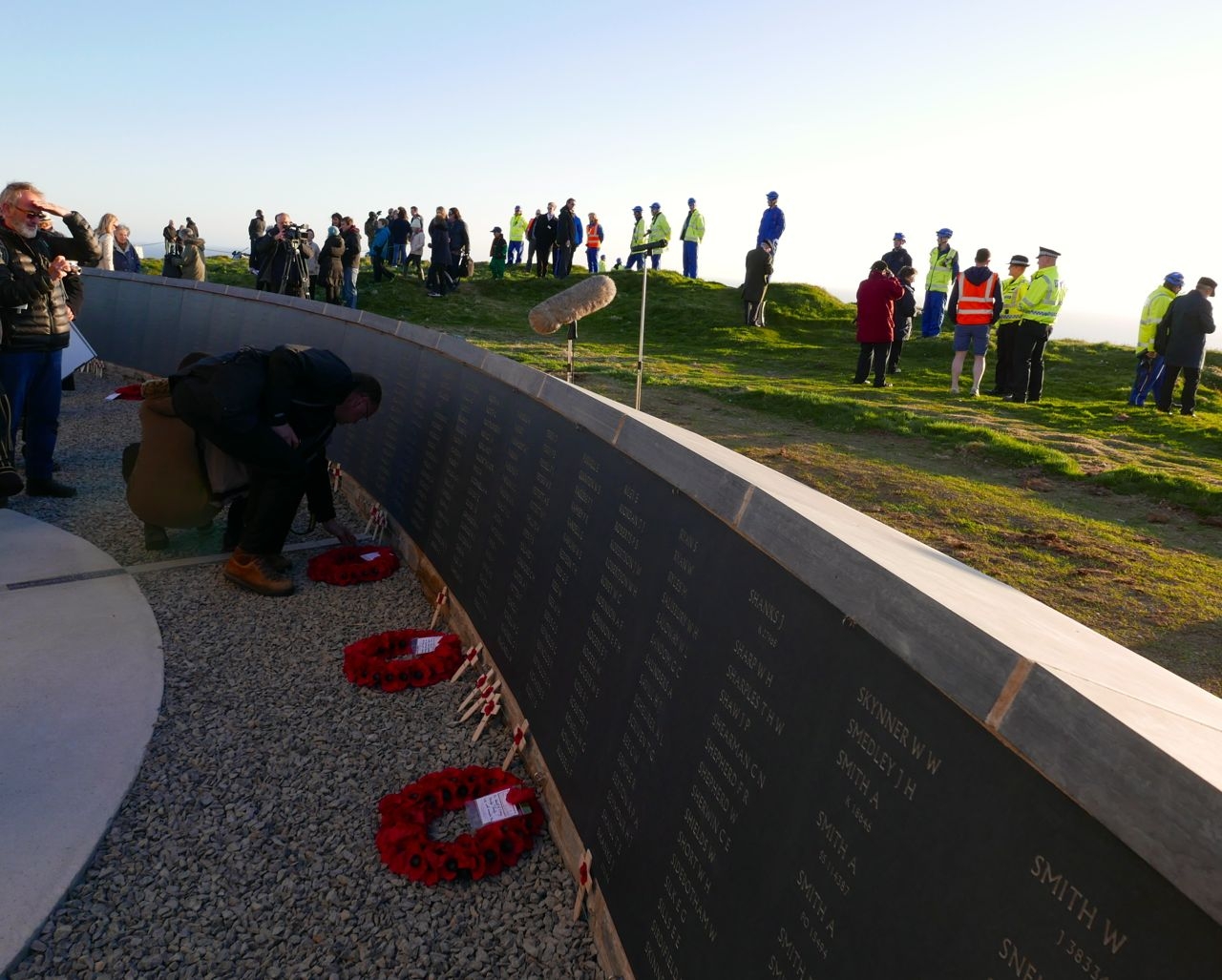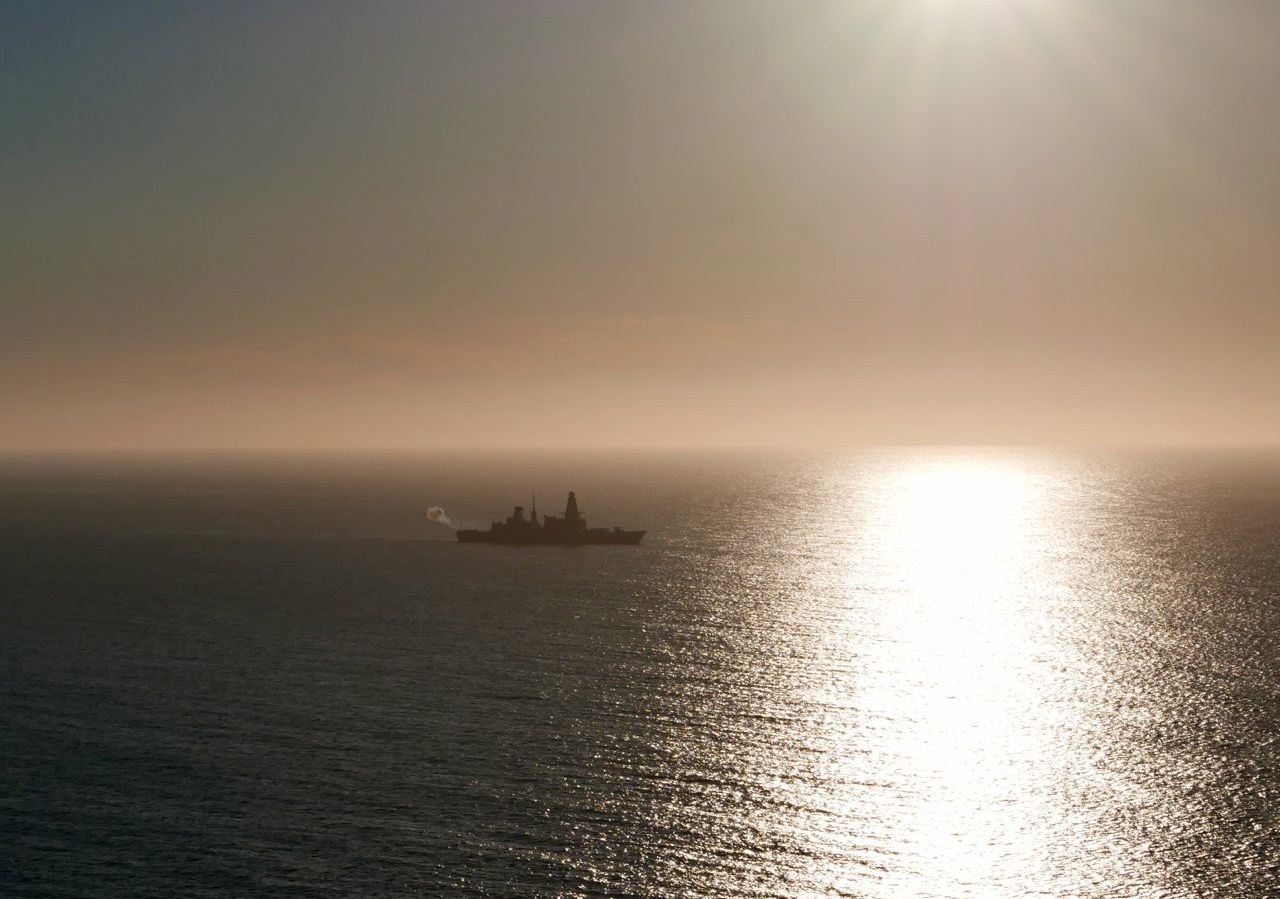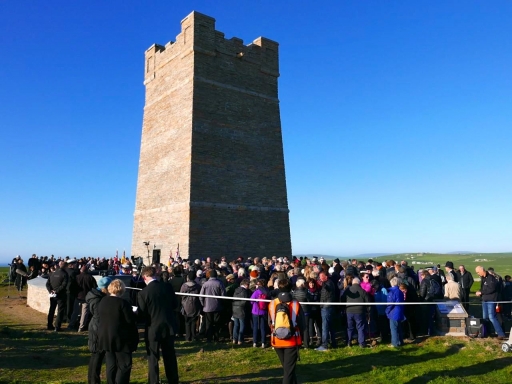Centenary News reports from the Orkney Islands on the unveiling of a new memorial commemorating all those who died in the mine explosion which sank ‘HMS Hampshire’ on June 5th 1916.
On a brilliant summer’s evening, descendants gathered for a ceremony recalling the sombre events of a century ago.
They stood overlooking the waters where more than 700 men perished in a disaster that claimed the life of Britain’s War Minister, Lord Kitchener, as he embarked on a secret diplomatic mission to Russia at the height of the First World War.
Just offshore, a warship of the modern Royal Navy marked the position where the British cruiser, Hampshire, was lost after hitting a mine. The wreck site is now a protected war grave.
The castellated tower of the Kitchener Memorial has soared above the cliffs of Marwick Head since the mid-1920s.
Now a low wall curves elegantly around the site, bearing the names of each and every one of the 737 men who died in the sinking of the Hampshire, together with nine others from a mine-sweeping vessel, HM Drifter Laurel Crown, also lost in these seas in June 1916.
 Personal tributes were placed at the new memorial after the main ceremony (Photo: Centenary News)
Personal tributes were placed at the new memorial after the main ceremony (Photo: Centenary News)
The commemorative wall (above) was unveiled on June 5th 2016 by Queen Elizabeth’s representative in Orkney, the Lord Lieutenant, Bill Spence.
Princess Anne had visited Orkney earlier in the afternoon for a private meeting with around 100 descendants.
Sunday’s ceremony was the culmination of a project by the Orkney Heritage Society to restore both the original Kitchener Memorial for the Centenary, and ‘to better remember’ all those who died with Field Marshal Kitchener.
The families of those lost in 1916 were joined by representatives of the British armed forces and local people for the remembrance service, timed to coincide with the exact hour of HMS Hampshire’s sinking.
A gun was fired from the Royal Navy destroyer HMS Duncan, anchored at the wreck site, to signal the start of two minutes’ silence at 8.45 pm.
Nearby, a vessel from Scotland’s Northern Lighthouse Board stood watch over the last reported position of Laurel Crown.
Lady Emma Kitchener, great great niece of Field Marshal Kitchener, attended the service, accompanied by her husband, Lord Fellowes, creator of the British television drama series Downton Abbey.
“It means an enormous amount,” she told Centenary News.
“I think the fact that all the men who died on the Hampshire are being commemorated, every single one, is fantastic. It’s very, very moving.”

HMS Duncan’s gun was fired to mark the start and conclusion of the two minutes’ silence (Photo Centenary News)
As well as Royal Navy crewmen, the dead included members of Lord Kitchener’s staff accompanying him on the voyage to the Russian arctic port of Archangel.
‘Everywhere, the intelligence caused the greatest consternation’ the Daily Telegraph newspaper reported on June 7th 1916, adding that initial rumours had ‘seemed too appalling to be credible.’
Julian Fellowes commented on the impact of Britain’s sudden loss of a Field Marshal who’d made his name soldiering in the empire.
“I think he was the giant of that particular moment in our history and when he went down, it was an enormous shock. He hadn’t finished his task. The public wanted him to take them through the war.”
At the end of the service, a lone piper played the traditional Scottish lament, ‘Flowers of the Forest’.
Only twelve crewmen from the Hampshire survived. The few bodies recovered were laid to rest at Lyness Royal Naval Cemetery on the Orkney island of Hoy.
After the sinking, attempts were made to clear other mines laid by the German submarine U-75.
Laurel Crown and her crew of nine themselves fell victim during minesweeping operations southwest of Marwick Head on June 22nd 1916.
A full list of the 746 men lost on HMS Hampshire and HM Drifter Laurel Crown can be found on the HMS Hampshire website.
See also on CN books page: HMS Hampshire: A Century of Myths and Mysteries Unravelled
Posted by CN Editor Peter Alhadeff, reporting from Orkney
Additional source: Daily Telegraph Archive
All images: Centenary News
